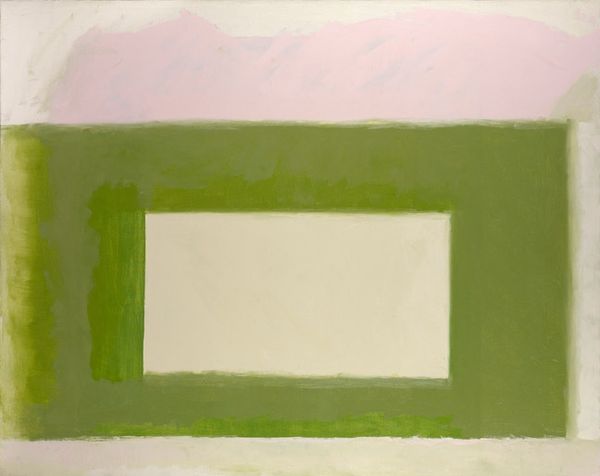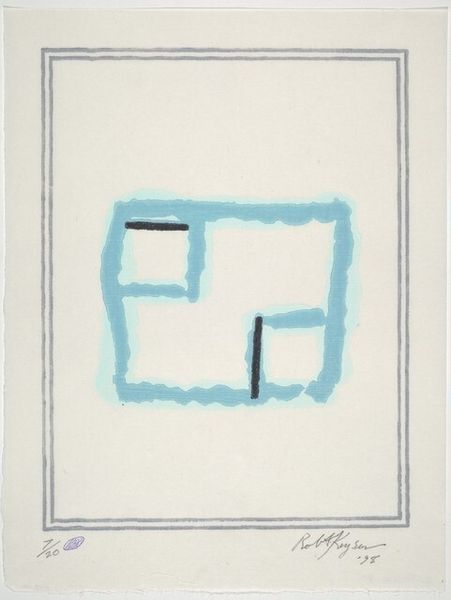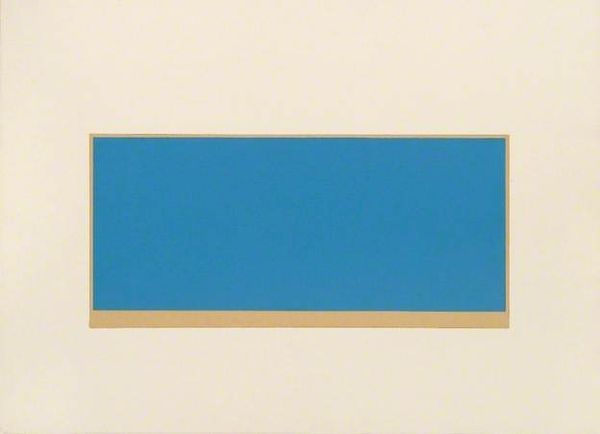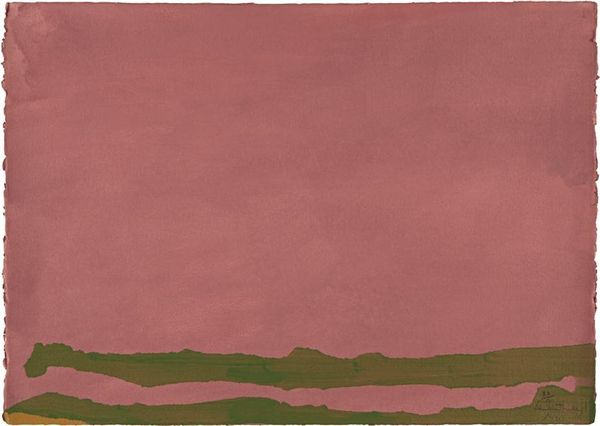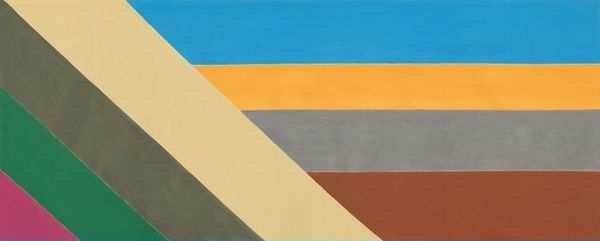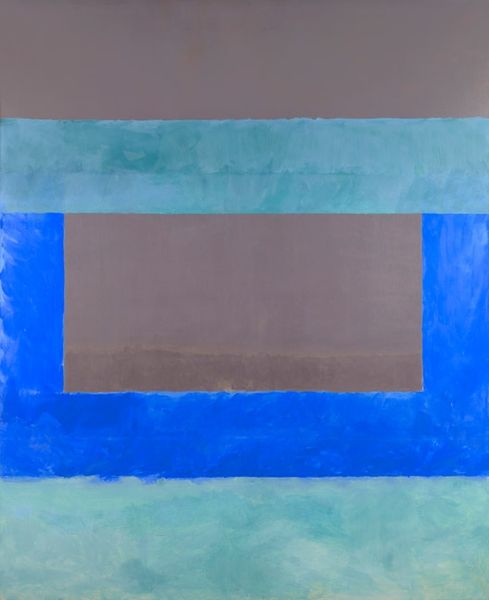
painting, oil-paint
#
painting
#
oil-paint
#
landscape
#
abstraction
#
modernism
Dimensions: overall: 76.2 × 121.6 cm (30 × 47 7/8 in.)
Copyright: National Gallery of Art: CC0 1.0
Editor: So here we have Georgia O'Keeffe’s "Wall with Green Door" from 1953, made with oil paint. It feels very minimal. The composition, with the solid blocks of color, creates a sense of quiet stillness. What do you see in this piece, focusing on its formal elements? Curator: The reduction to essential geometric forms – the rectangles and bands – demonstrates a profound interest in the picture plane itself. Observe the subtle variations in the textured planes; the pale pink isn't uniform. Editor: Yes, I see that now. The slightly mottled surface gives it depth. Curator: Precisely. The placement of the green rectangle is key. It isn't perfectly centered, creating a subtle tension within the composition. How would you describe its function within the picture? Editor: It definitely draws the eye, creating a focal point, though I am unsure if it balances out the rest. Curator: The balance isn't symmetrical, but consider the weight the green carries against the larger, lighter masses. Is this a literal wall? I posit that the materiality and flatness serve to undermine any illusionistic reading. O’Keeffe has transformed something representational into a purely formal study. Editor: So, rather than thinking of it as a landscape with a door, we should see it as an exercise in form and color relationships. Curator: Indeed. It's the interplay of those elements that truly constitutes the work’s significance. The abstraction isn't about obscuring reality, but revealing fundamental structures and properties. Editor: I never thought about it that way. Paying attention to just color, texture and form helps me see beyond just the surface-level image. Curator: Exploring pure abstraction may lead us toward something deeper about the experience of our visual world.
Comments
No comments
Be the first to comment and join the conversation on the ultimate creative platform.
